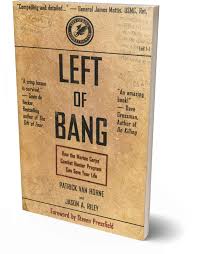In an article I posted last week about why we don’t spend much of our time or energy here at The CP Journal thinking the competitors to our business, I explained how we use the “3 Buckets of Control” to focus only on those things that we can do to support our students. The reason why I discussed this view is not because we aren’t competitive. By defining the people and organizations who are not our enemies, we can focus on those who truly are. The adversaries that we compete with are not other businesses in our field. They are the predators who are attempting to hide within our communities and interrupt our right to life, liberty and the pursuit of happiness. Our clients might call this adversary a terrorist, an active shooter, a deranged fan, a bully or a gang member, and as we seek to support our clients in their fight against these predators, there are a few key considerations that make up our perspective on our true competitors.
1. This is a competition with clear winners and losers.
As we move through 2016 and consider the violence we have experienced in the past few years, the world certainly feels like a more dangerous place than it did even just five or six years ago. We have seen high profile terrorist attacks in Paris, Brussels and Orlando. We have seen race-related violence that led to the recent murder of five police officers in Dallas, Texas, and the murder of nine people at a church in Charleston, South Carolina. We have seen and experienced how often we turn on breaking news to listen to the reporting of an active shooter in our schools, workplaces and city sidewalks. While the “experts” appearing on 24-hour news channels debate whether this is an actual rise in violence or just a rise in the reporting of violence, the distinction is irrelevant. It simply feels more violent out there and, because of the fact that success stories where the good guys stop an attack by being left of bang aren’t reported as frequently as when attackers succeed, it feels like the predators are winning this fight.
Fighting a perception of pervasive violence is a big enough challenge in its own right and there is no room for people who think that we are doing things “good enough,” because clearly we aren’t. In their Continue reading »


